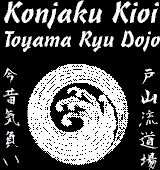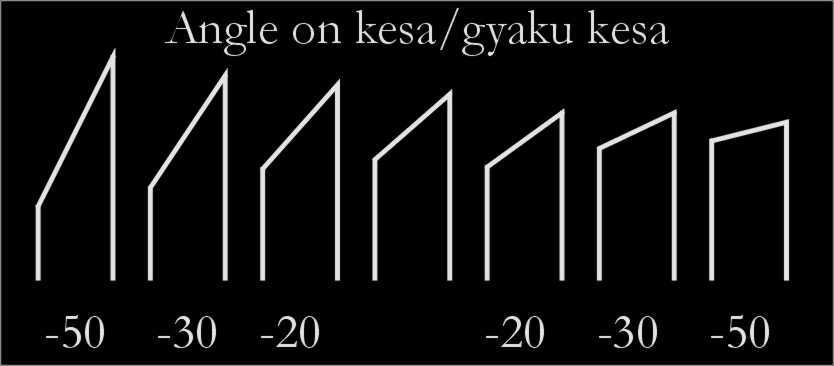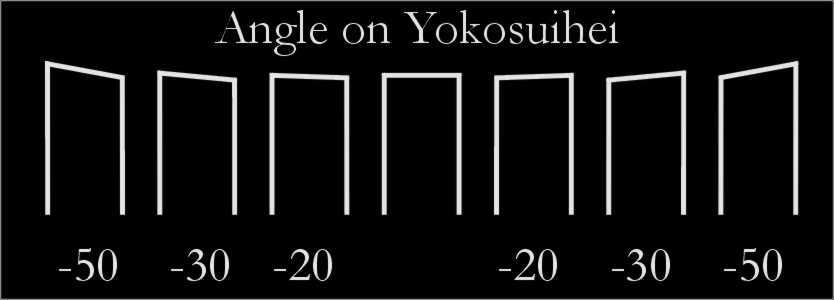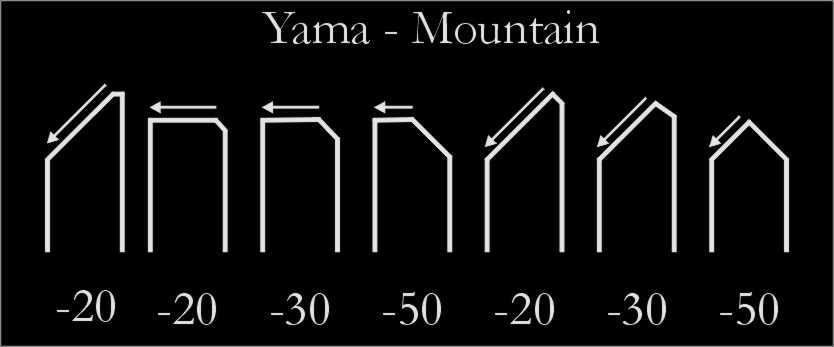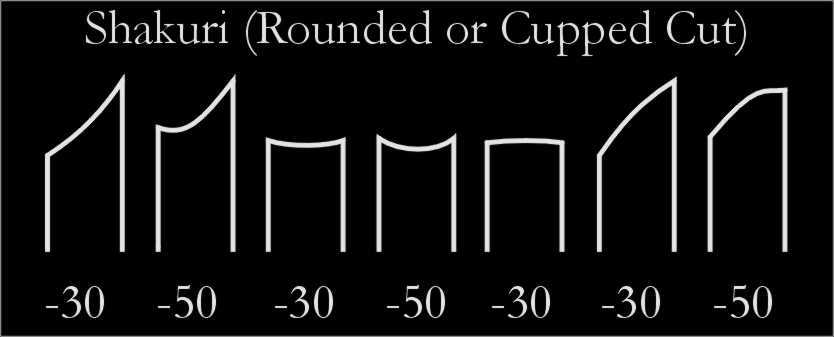 |
Toyama Ryu Batto Do Konjaku Kioi Dojo (Ancient and Modern Fighting Spirit Dojo) |
5980 66th St N Suite M St Petersburg FL 33709 Email: info@toyama-ryu.com Phone: 727-329-9679 |
|
Home
|
Konjaku Kioi Judging StandardsThese guides are for students and instructors at the Konjaku Kioi dojo and any competitors in taikai sponsored by the dojo.
Judgment of TameshigiriTameshigiri should be numerically scored based on the Judging Standards For Cutting. Scores start at zero and go negative. Each cut may have multiple deductions. Emphasis of certain aspects of a cutting pattern should be based on the Standard Cutting Patterns. The scoring criteria from the Judging Standards for Posture should only be used when two competitors have tied. Judging Standards For CuttingMinus 20 Points (4 cases)
Minus 30 Points (6 cases)
Minus 50 Points (7 cases)
Shikkaku (Disqualified) (9 cases)
Levels of DeductionDeductions vary with the severity of the problem. If the angle of a cut is only slightly off, the deduction is -20 points. If it is not even close, the deduction can be -50 points. This section shows what angles are acceptable and what deductions should be given. While there might not seem much difference between the angles, they may be the only difference between two competitors. Kesa / Gyaku Kesa Angle DeductionsThe proper angle for Kesa or Gyaku Kesa cut is 45 degrees. It is important to properly score each cut in a pattern as they occur. This angle chart must be studied carefully.
Yokosuihei Angle DeductionsYokosuihei should be perfectly flat. It is easier to judge than 45 degrees and deviations are easier to score. It is the last cut of Godangiri, Rokudangiri and Namigaeshi, but should not be over emphasized over the other cuts.
Yama (mountain shape) DeductionYama are very common and minor yama sometimes difficult to see. Any Yama should cause at least a -20 point deduction even if it is very small. Judges should watch for Yama on the first cut and whenever cuts change angles.
Shakuri (rounded or cupped cut) DeductionsShakuri (rounded or cupped cut) have a -30 point deduction. Severe cases should have a -50 point deduction. The first sign of Shakuri is often a harsh impact sound.
Judging Standards for PostureMinus 20 Points (4 cases)
Minus 30 Points (5 cases)
Minus 50 Points (1 case)
|
Copyright © 2006 by Konjaku Kioi Toyama Ryu Dojo, All rights reserved.
Samurai Swords
Iaito (Practice Swords)
Shinken (Cutting Swords)
Wakizashi (Short Swords)
Tanto (Daggers)
Japanese Weapons
Maintenance
Uniforms
Sharpening
Sword Repair
Martial Arts
Dictionary Your Name in Japanese
Dojo Stories
Tatami Targets
